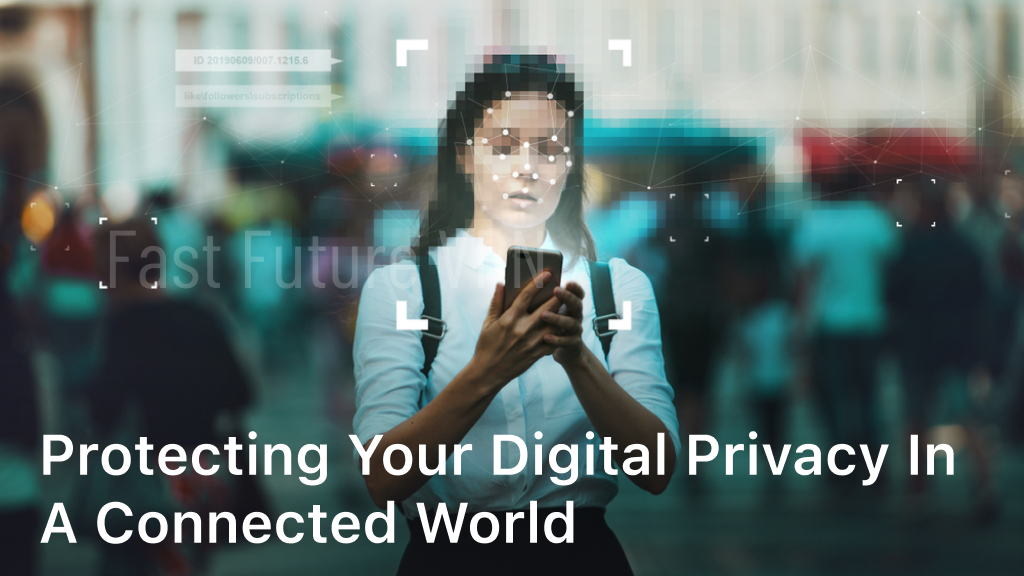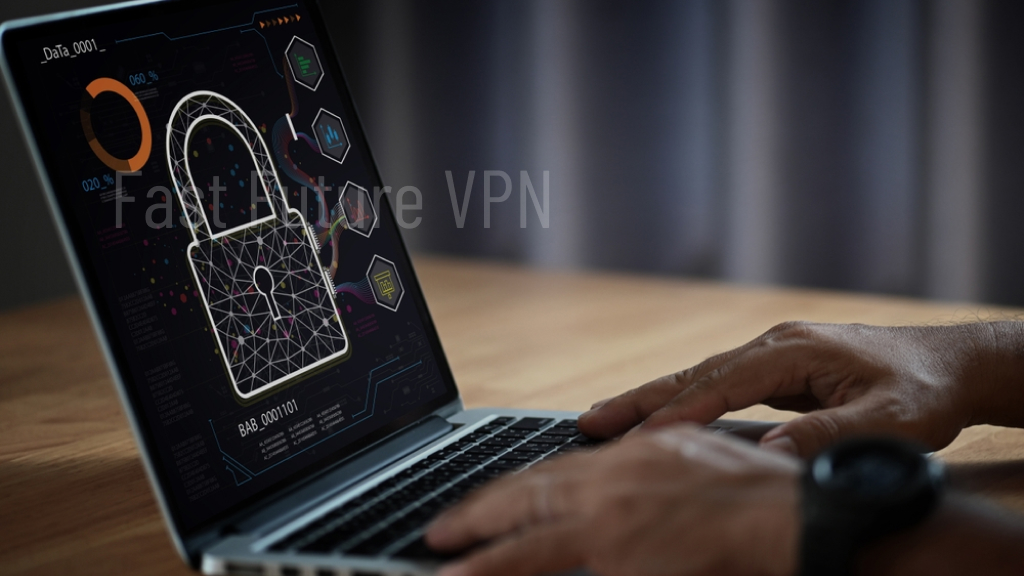
In today’s interconnected world, digital privacy is more essential than ever before. With our increasing online presence, we are all vulnerable to cyber threats that can compromise our personal information, threaten our identity, and violate our privacy.
But fear not; there are ways to keep your digital life secure. In this article, we will explore the importance of protecting your digital privacy in a connected world. We’ll look into the various risks associated with cyber threats and provide you with practical tools and practices to secure your personal devices and online accounts. Stay with us to safeguard your digital privacy and protect your peace of mind.
Understanding Digital Privacy Risks

Digital privacy risks have become a major concern in today’s connected world. Data breaches, identity theft, online tracking, and phishing attacks are some of the risks that can put personal and financial information in jeopardy.
A data breach occurs when a hacker gains unauthorized access to a company or organization’s network and steals or leaks sensitive information. This can include personal identifiable information (PII) such as name, address, date of birth, and Social Security number.
Identity theft involves stealing a person’s PII to commit fraudulent activities such as applying for a loan or credit card in their name. Online tracking is when companies collect data on users’ online activities and use it for targeted advertising and other purposes.
Phishing is a technique used by cybercriminals to trick people into sharing sensitive information such as login credentials or credit card numbers. They send an email or message that looks legitimate, but in fact, it’s a scam designed to steal information.
These risks can have serious consequences such as financial loss, reputational damage, and even physical harm in certain cases. That’s why it’s crucial to take proactive measures to protect personal information and safeguard against these threats.
Essential Privacy Tools and Practices
Protecting one’s digital privacy requires the use of essential privacy tools and practices. One way to secure online profiles is by using strong, unique passwords. It is advisable to avoid using easily guessable passwords, such as birth dates or pet names. Additionally, enabling two-factor authentication for accounts adds a layer of protection against cyber threats.
Using virtual private networks (VPNs) is another crucial tool as it encrypts internet traffic, offering a secure connection even when accessing public Wi-Fi. One must also regularly update software and applications to make the most of their security features and patch vulnerabilities.
Data encryption is significant in protecting personal information, whether at rest or in transit. One must take caution when sharing personal information online and ensure that websites are secure and have SSL certification. As online privacy is a precious commodity, it is essential to implement privacy-enhancing browser extensions, ad blockers, and a secure search engine, such as DuckDuckGo.
In conclusion, there are many privacy tools and practices available to secure digital privacy. Being aware of these and making a conscious effort to follow them will help individuals protect their online privacy from cyber threats.
Privacy Settings and Permissions
With the increasing number of devices, social media platforms, and online services, it is crucial to ensure that privacy settings are tailored to one’s preferences. Granting excessive permissions could lead to exploitation of personal information, which could result in data breaches, identity theft, and other breaches of privacy.
Step-by-step instructions to maximize privacy settings on popular platforms are provided below:
- Open Facebook privacy settings and tools.
- Choose the privacy settings you want for your account.
- Customize settings for specific features, such as Timeline and tagging.
- Limit or hide past Facebook posts.
- Manage the data that apps and websites share with Facebook.
- Go to your Google Account.
- Click Security.
- Under “Third-party apps with account access,” select Manage third-party access.
- Select the app or service you want to review and select Remove Access.
Apple
- Open the Settings app.
- Select Privacy from the list.
- Select the app you want to change the privacy settings for and choose which settings to allow or revoke.
By adjusting privacy settings and managing permissions on devices and platforms, users can significantly reduce the risk of having their personal information compromised.
Securing Personal Devices
Protecting your personal devices is crucial for ensuring your digital privacy and security. There are several strategies you can implement to safeguard your smartphones, laptops, and tablets.
Enable Device Encryption
Device encryption is a critical security feature that protects your data from unauthorized access. Encryption transforms your files and data into an unreadable format, making it impossible for hackers or cybercriminals to decipher them without the encryption key or password. Therefore, it is essential to enable encryption for all your devices and protect your personal data from exposure.
Use Strong Passcodes
Using strong and unique passcodes can significantly enhance device security. It is advisable to choose complex combinations comprising letters, numbers, and symbols. You can also use biometric recognition, such as fingerprints or facial recognition, for extra protection. Regularly changing your passcodes and avoiding predictable patterns can help prevent unauthorized access to your devices.
Regularly Update Operating Systems
Keeping your device operating systems updated is crucial for protecting against emerging threats and vulnerabilities. Software updates typically include security patches and bug fixes that address known security issues. Regular updates can help mitigate security risks, ensure optimal device performance, and prolong device lifespan.
Be Cautious While Downloading Apps and Files
Downloading apps and files from untrusted sources can expose your device to malware and other security threats. To protect your device, it is essential to install apps and files only from reputable sources, such as official app stores and verified websites. Additionally, scanning all downloaded files and emails for malware, viruses, or suspicious content can help prevent security breaches.
Implement Security Features Like Remote Tracking and Data Wiping
Implementing security features like remote tracking and data wiping can help secure your device in case of loss or theft. Remote tracking enables you to locate your device in real-time and take appropriate action, while data wiping allows you to delete all data stored on your device remotely. These features can help safeguard your data and prevent unauthorized access to personal information.
By implementing these strategies, you can significantly enhance the security of your personal devices and protect your digital privacy.
Staying Informed and Educated
In today’s increasingly connected world, staying informed and educated about digital privacy is essential to ensure the safety and security of personal data. To stay up-to-date with the latest cybersecurity threats and best practices, it is recommended to follow reputable online resources, such as cybersecurity blogs and websites.
Additionally, there are numerous online courses available that cover various aspects of digital privacy and security. These courses can range from basic introductions to more advanced topics, making them suitable for individuals with varying levels of technical expertise. By taking advantage of these resources, individuals can stay informed and knowledgeable about emerging threats and strategies to protect their digital privacy.
It is also important to remain vigilant and aware of the latest privacy regulations and legislation. By staying informed about changes and updates related to digital privacy, individuals can ensure that they are complying with the newest regulations and are taking all necessary precautions to safeguard their personal data.
Conclusion
Protecting digital privacy has become more important than ever in our connected world. Cyber threats like data breaches, identity theft, and online tracking have made it crucial for individuals to take proactive measures to safeguard their personal information and online presence.
By understanding digital privacy risks and implementing essential tools and practices, like using strong passwords, adjusting privacy settings, and securing personal devices, individuals can significantly reduce the likelihood of falling victim to cyber threats. Ongoing education and awareness in the field of digital privacy are also critical to ensuring optimal online privacy and security.
Remember, taking these steps may seem daunting at first, but they can go a long way in protecting your digital privacy. We encourage all our readers to take the necessary precautions to safeguard their online presence and personal data. Stay informed, stay educated, and stay safe online!
FAQ
What is digital privacy?
Digital privacy refers to the control individuals have over their personal information in the digital realm. It encompasses the protection of sensitive data from unauthorized access, ensuring online anonymity, and preventing the misuse of personal information.
Why is protecting digital privacy important in a connected world?
In a connected world, where we increasingly rely on digital devices and online services, protecting our digital privacy is crucial. It helps safeguard our personal information from cyber threats, prevents identity theft, maintains online reputation, and ensures the security of our financial transactions.
What are the potential risks to digital privacy?
There are several risks to digital privacy, including data breaches, where sensitive information is exposed or stolen by hackers. Other risks include online tracking, where companies collect and analyze user data for targeted advertising, as well as phishing attacks, where cybercriminals attempt to trick individuals into revealing personal information.
What are some essential privacy tools and practices?
Essential privacy tools and practices include using strong, unique passwords for online accounts, enabling two-factor authentication for added security, and regularly updating software and applications to patch vulnerabilities. It’s also important to use virtual private networks (VPNs) to encrypt internet traffic and be cautious while sharing personal information online.
How can I adjust privacy settings and manage permissions?
To adjust privacy settings and manage permissions, review the settings on your devices, social media platforms, and online services. Be mindful of the information you share and limit access to personal data on individual platforms. Regularly review and update privacy settings to ensure maximum protection.
How can I secure my personal devices for better privacy?
Securing personal devices involves enabling device encryption, using strong passcodes or biometric authentication, and regularly updating the operating system and apps. Be cautious when downloading apps or opening files. Implementing device tracking and remote wiping features can also help protect personal information in case of theft or loss.
How can I stay informed and educated about digital privacy?
You can stay informed by following reputable cybersecurity websites and blogs, subscribing to newsletters, and participating in online courses. Being aware of emerging threats, privacy regulations, and best practices will help you make informed decisions to safeguard your digital privacy.




